How to render tallow from an intact piece of beef suet from your grassfed farmer. This traditional recipe with video how-to makes several jars of tasty pastured beef tallow to last you many months or even a year!
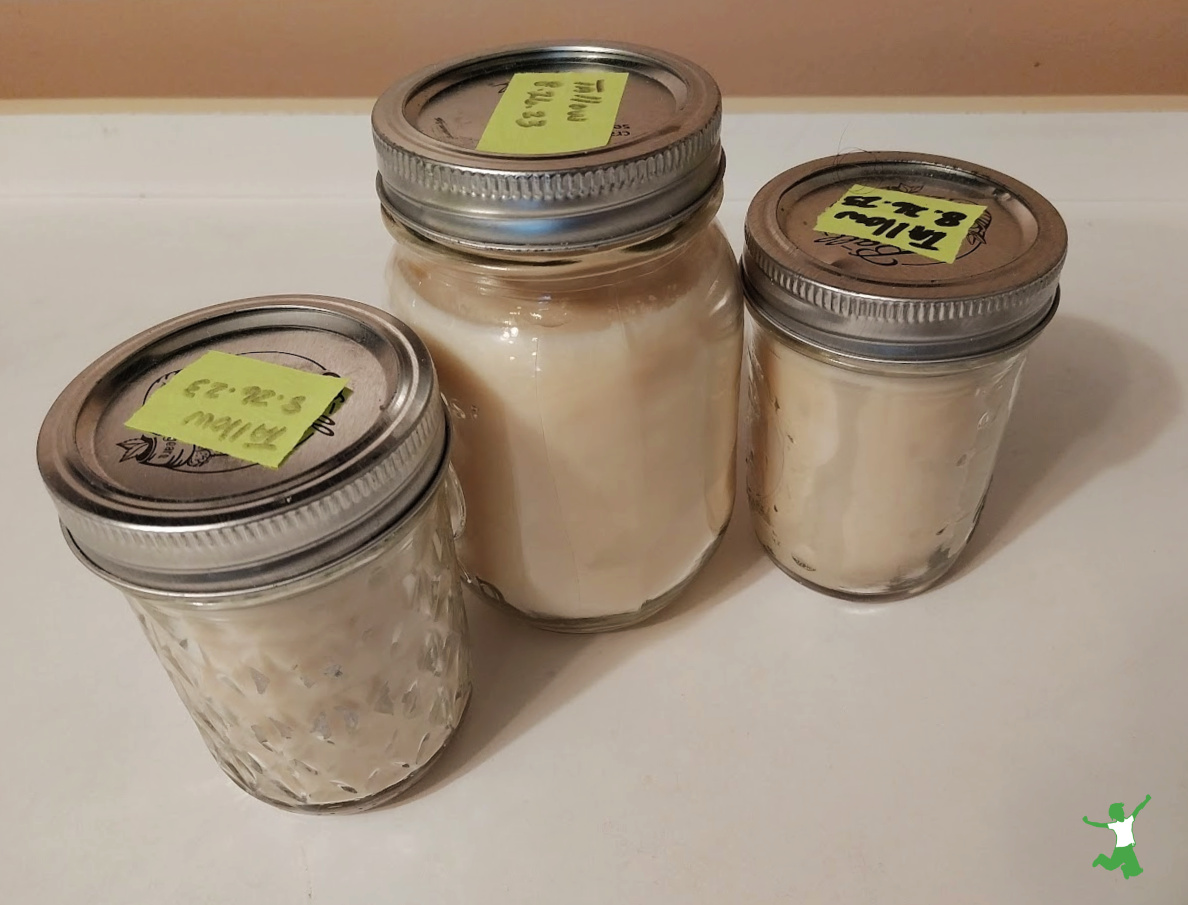
Tallow is hands down my favorite traditional fat to use for frying. I like it even more than lard. It is ideal for this purpose as it has less than 3% polyunsaturated fats. This amount is just a bit less than coconut oil.
What’s more, if your tallow comes from cattle finished on grass or given grain for a very short period of time (a few weeks at the most) before processing, a good share of those polyunsaturates are in the form of conjugated linoleic acid (CLA).
This fatty acid helps build muscle, assists with weight loss, and drastically reduces cancerous tumor risk.
These are just a few of the many health benefits.
Beef Tallow: Not Just Any Fat
Tallow is a very special type of beef fat.
It is the rendered form of suet, which is the nutrient-rich beef or mutton fat found around the organs, particularly the kidneys.
It is the highly prized nourishing fat used in pemmican, a traditional food used by Native Americans to survive harsh winters. Sometimes they subsisted on nothing else for weeks on end with no loss in health!
Traditional pemmican includes tallow in a 1:1 ratio with dried and powdered, ideally, grass-fed muscle meat. It is the ultimate survival food.
Besides CLA, another notable fat present in high amounts in beef tallow is palmitoleic acid, which is highly anti-viral and anti-bacterial.
Fatty Acid Profile
The fatty acid profile of beef tallow is approximately 55% saturated fats and 40% monounsaturated fats.
Both of these fatty acids are very heat stable and do not easily produce free radicals when heated, unlike toxic liquid seed oils.
The smokepoint for tallow is at least 350°F (177°C). Some sources put it as high as 400 °F (204°C), making it an excellent choice for frying.
Preparation and Storage
Rendering pastured tallow is a simple process. It is very similar to the method for rendering pork lard.
From start to finish, the how-to video demonstration in the recipe below shows you exactly what you need to know to produce several jars full that will last you a very long time!
My favorite dishes for using homemade tallow are stovetop french fries, roasted vegetables, hush puppies and shelf-stable pemmican (for the emergency pantry).
Note that pastured tallow is a beautiful yellow color when liquid immediately after you render it. The color lightens to beige at room temperature and in the refrigerator. It whitens a bit further in the freezer.
If you live in a cool climate, tallow keeps well in the pantry.
I choose to refrigerate as this is my preference in hot, humid Florida.
In my experience, rendered beef tallow will keep many months in the refrigerator and years if you freeze some!
Tip: Dehydrate the leftover kidney and organ tissue in the oven and then pulse in the food processor to make pastured organ meat powder. Blend 1-2 tablespoons of the powder into soups and sauces for extra flavor! Store the powder in a mason jar in the refrigerator.
Alternatively, mix the leftover kidney and organ tissue from rendering the tallow with homemade dog food.
Where to Find Beef Suet to Make Tallow
Before you can make your own tallow, you first need to source an intact piece (or coarsely chopped pieces) of beef suet from a pastured farmer.
Below is a picture of what a full piece of beef suet looks like (sitting on my counter, ready to be rendered!).
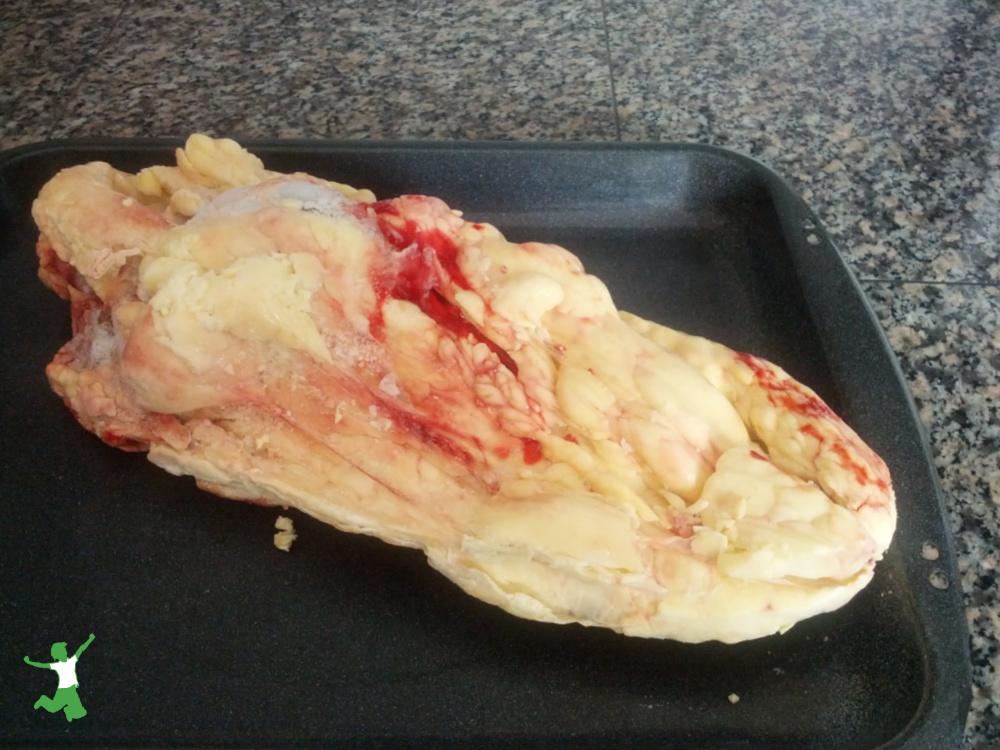
The absolute best way to source suet is to “split a cow”, otherwise known as buying beef shares directly from a grassfed beef farmer. The linked article provides the details on where/how to do this if you are a newbie to the process of buying farm-direct products.
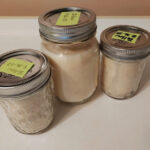
How to Render Tallow
The traditional method for rendering tallow from an intact piece of suet that you can obtain from a pastured farmer.
Ingredients
- 1 intact piece of suet preferably grassfed
Instructions
-
Take an intact piece of suet and cut into medium to small pieces on a large cutting board. Remove the kidney and set aside.
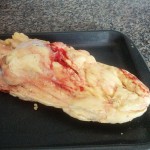
-
Place the suet pieces in a large pan.

-
Place pan in an oven preheated to 175-200 °F/ 79-93 °C
-
Every hour or so, remove the pan and pour off the melted tallow. Sieve through a cheesecloth to remove any tissue.

-
Continue the process until all the fat has rendered. This will take a few hours. Tallow is quite yellow when it is liquid.
-
Pour strained tallow into glass mason jars after it has cooled. Screw on the lids and refrigerate. As it hardens in the fridge, tallow turns a whitish beige color. Tallow will keep for many months in the refrigerator and a year or more in the freezer.
Recipe Video
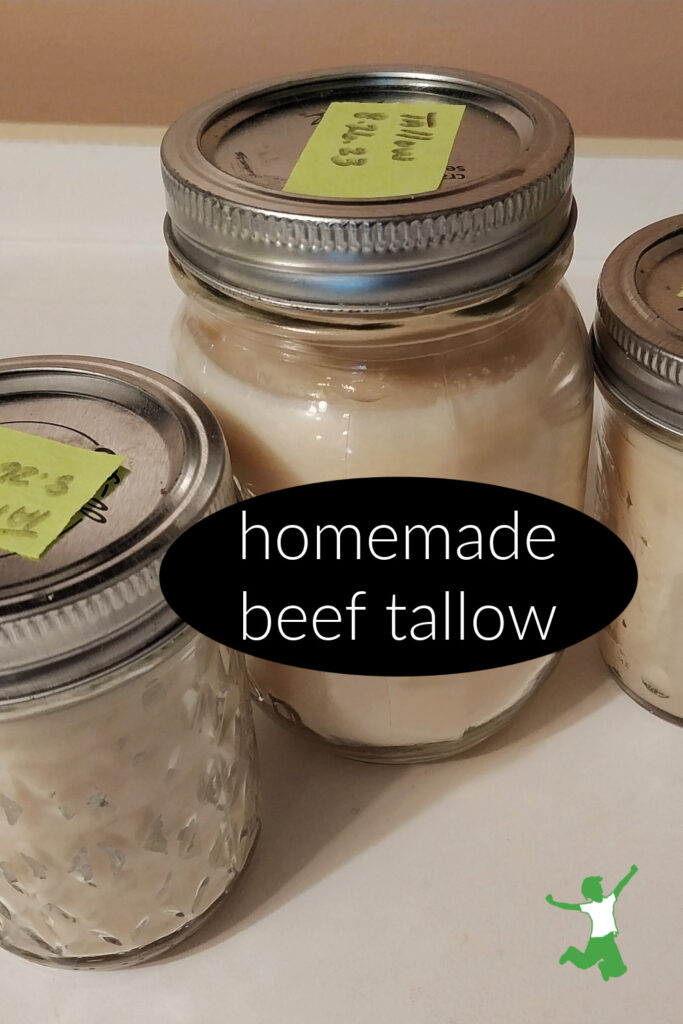








I worked for McD’s when they still used beef tallow. Unfortunately they fell to the pressure of a so-called heart doctor that believed that animal fats were bad. My guess is he had a huge investment in vegetable oil companies and forced a lot of fast food to switch over.
I agree! Its absolutely the BEST way to fry fries! 😉
Oh man, I would so try this. I know it would be awesome for frying.
just be careful of the source… animal fat is good for us…. it’s the veggie oils that are bad….
The lack of good fats in our diets have led to all sorts of health problems. Some nutrients are fat-soluble, so without fat, the body cannot absorb them. Butter your veggies, and throw out that margarine! 🙂
I recently bought a bag of sheep fat for .32 cents a pound (I live in Peru). My wife’s family (Peruvians) all think that I’m crazy. They don’t like the smell and everybody says that sheep fat is dirty and really bad for your health, about the worst fat you can buy. Pig fat is acceptable, but not sheep fat.
Best of all, it comes from sheep grazing on grass at 13,000 – 14,500 feet.
(The traditional way to eat is to eat all the fat. The idea that sheep fat isn’t healthy is recent.)
Does rendered sheep fat smell bad?
Is the rendered fat healthier than the solid fat that is left over?
Do you know anybody that would want to import it to the USA? (I don’t know anything about exporting, but it seems like a good idea. Although teaching Peruvians to not throw it away would be more ethical.)
That’s is supposed to be god for you? I thought in all fat was bad.
interesting
Miller’s Organic Farm in PA sells it. They’re a private buying club.
Still looking for a source- (are the laws screwy or what?) but I cant wait to try this!